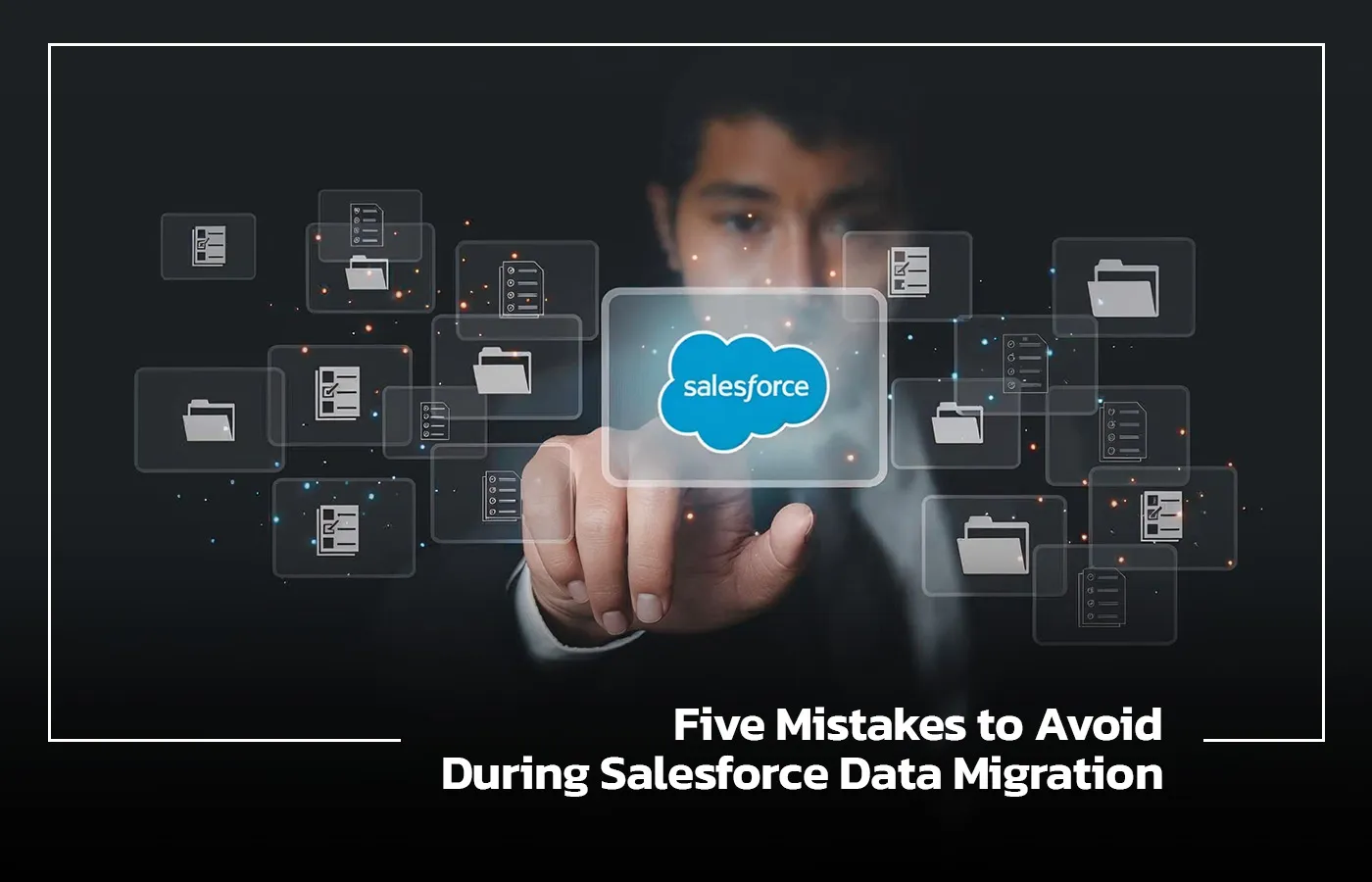Five Mistakes to Avoid During Salesforce Data Migration

How Expert Services Can Help
As companies grow or modernize their operations, the need to shift to a more scalable, integrated CRM becomes critical. Salesforce Data Migration is typically required when businesses are moving away from legacy CRMs like Zoho, HubSpot, or spreadsheets, consolidating multiple data sources, or streamlining post-merger operations. Migration is also essential when upgrading to Salesforce from older Salesforce instances or when adopting new Salesforce Clouds such as Sales, Service, or Experience Cloud. It’s not just about moving data—it’s about setting up a future-ready system that connects people, processes, and performance.
A well-executed Salesforce Data Migration brings clarity, automation, and consistency to your customer relationship management. But when done without a clear plan, it can quickly lead to data errors, team frustration, and low adoption. Below are the top five mistakes businesses often make during Salesforce Data Migration, and how working with experts can ensure a much smoother and more strategic transition.
1. Migrating Without a Clear Data Strategy
One of the most common issues during Salesforce Data Migration is the failure to plan what data needs to be moved, cleaned, or archived. Businesses often transfer data from their old systems without due-diligence; without reviewing its value or structure. Skipping this one step can lead to cluttered databases and poor user experience.
Expert-led migration begins with a detailed audit. This process identifies what data should be prioritized, how it should be mapped, and what can be left behind. Clean data means better reporting, faster system performance, and improved decision-making.
2. Underestimating Stakeholder Involvement
Salesforce Data Migration is not just a technology project. It touches almost every department in your organization. When migration is handled in isolation by IT or external teams, it often misses the unique needs of sales, marketing, customer service, and leadership.
Involving key users early allows the new CRM system to reflect real workflows. It also drives higher adoption after go-live. Experts help align the technical rollout with business goals, ensuring everyone benefits from the migration.
3. Skipping a Sandbox or Test Environment
Some businesses move straight to production without testing the migration in a secure, controlled environment. This creates a serious risk of data loss, broken processes, and user access issues that could have been identified earlier.
A well-structured Salesforce Data Migration uses sandbox testing to verify data accuracy, workflow functionality, and integration stability. Issues can be resolved early, avoiding surprises on launch day.
4. Overlooking Integration Requirements
Salesforce rarely functions as a standalone tool. Businesses typically rely on it to interact with ERP systems, email marketing platforms, finance software, and more. Ignoring these integrations until after migration leads to inefficiencies and delays.
Planning integrations early ensures that Salesforce works smoothly with the rest of your ecosystem. Whether it’s connecting to Microsoft Dynamics, Stripe, or Mailchimp, the right configuration ensures data flows accurately across all systems.
5. Relying on One-Size-Fits-All Migration Tools
Many companies turn to generic migration tools expecting a fast fix. These tools may help with basic contact data, but they often fail when dealing with custom objects, field-level security, or complex automations.
A tailored Salesforce Data Migration approach considers your unique business logic and future growth. Certified experts ensure your system is set up for scalability, performance, and security. Post-migration training and support also prepare your teams for long-term success.
Why Expert-Led Salesforce Data Migration Matters
Working with an experienced Salesforce partner removes the guesswork. From pre-migration audits to post-launch support, expert teams reduce risk, improve system reliability, and speed up deployment.
As highlighted by CX Today Salesforce continues to dominate the CRM space. Salesforce’s own best practices for organizing and migrating the data. One of the softer aspects is the stakeholder alignment and testing.
Are You Ready for Salesforce Data Migration?
Avoid the most common pitfalls and make your Salesforce Data Migration smooth, secure, and successful. Our certified team ensures a customized plan, clean data migration, and seamless integration with your existing tools.
Contact us today for a free pre-migration audit and let us help you build a Salesforce environment that works from day one.
